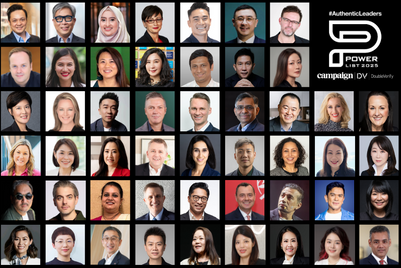
TBWA Asia-Pacific has never had a regional creative for Southeast Asia before but the region’s increasing unity has changed that.
“We now see the need for having creative leadership here now due to Southeast Asia’s changing dynamics,” says Edmund Choe, who recently moved from Shanghai to the Lion City to take up his new post as chief creative officer of Singapore and Southeast Asia.
While some have complained that the increasing cultural homogeneity has undermined individual nations’ creativity, Choe is far more positive; communication, after all, is what the job is about.
“If one powerful idea can help brands to reach a broader audience, it will offer a bigger opportunity,” says the man the industry has fondly nicknamed ‘The Buddha’. This is mostly, he claims, due to his serene approach to life, and only partly for his looks.
TBWA Southeast Asia’s currently boasts some big names among its regional clients including SIA, Great Eastern Life and Heineken and keeping these accounts will require a strong team. So Choe views his main job as less about upping the region’s creative chops and more about “bringing people together”. Teams need to work together seamlessly to seize opportunities, says Choe. “Creatives can be strong individuals who find it hard to collaborate, but if they are well matched, it can be a formidable team.”
|
The problem with focusing too strongly on ‘creatives’ is that agencies end up chasing awards. Southeast Asia has many talented young creatives, says Choe, but the industry, globally, has a “crush on awards”, which gets in the way of training young talent .
“Awards are important for both an agency and personal profile, but many young creatives are doing works ‘to win’ awards, instead of doing works that ‘win’,” he says. “We have made this happen.”
Agencies have to learn that their duty is to groom great creative leaders, says Choe, and the sooner agencies realize this the better. “The advertising business is no longer as glamorous as it used to be,” he says. “Young talent are keen to go where they can achieve more and succeed fast.”
Instead, agencies should focus on solving clients’ problems and providing business solutions beyond direct sales — even if the clients themselves prove stubborn.
“The most useful thing I learnt during my time in China is tenacity,” says Choe. Many international brands that enter the market have sales as their top priority and are often reluctant to let ideas mature, he says.
“We still end up with good work, but not great work, because we can’t afford the time to make it great or try something new.”
But for the clients that allow a longer leash, Choe and his team attempt to tackle deeper social issues that may be hampering the brand’s performance. The agency’s work for adidas on the ‘All in for #mygirls’ campaign, for example, addressed the aversion many Chinese girls have to physical activity by emphasising sisterhood and encouraging them to build confidence through sport.
Similarly, to tackle client McDonald’s lack of popularity in China (compared with rival KFC which remains China’s top foreign fast-food brand), TBWA China created a location-based ‘Angry Bird’ campaign that coaxed young consumers in-store by inviting them to unlock special game modes when they passed by or dined-in.
While Choe doesn’t expect Southeast Asia to be as resistant as China to new ideas, he does feel that local agencies have a steep learning curve ahead of them. Regional work has previously been dominated by giant agencies such as Ogilvy and Saatchi & Saatchi, he says. Nonetheless, Choe is poised to take on the challenge: “I like being thrown in at the deep-end.”


+(900+x+600+px)+(3).png&h=334&w=500&q=100&v=20250320&c=1)

.jpg&h=334&w=500&q=100&v=20250320&c=1)
+(900+x+600+px).jpg&h=334&w=500&q=100&v=20250320&c=1)




.jpg&h=334&w=500&q=100&v=20250320&c=1)
+(900+x+600+px)+(1).png&h=334&w=500&q=100&v=20250320&c=1)







